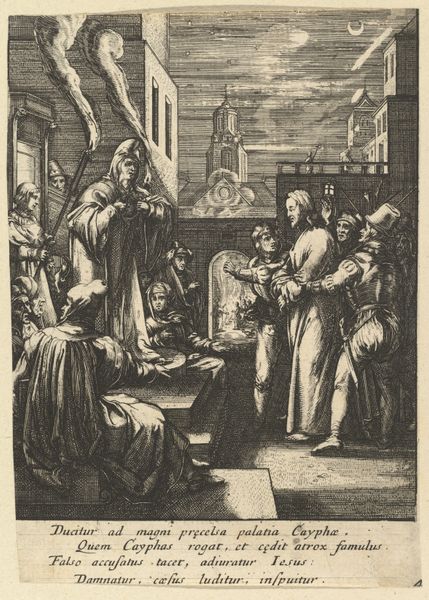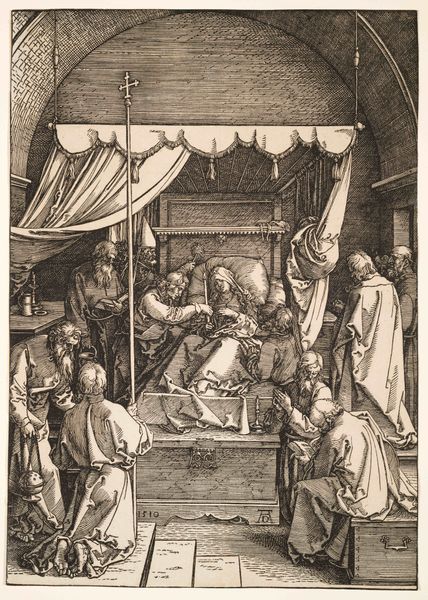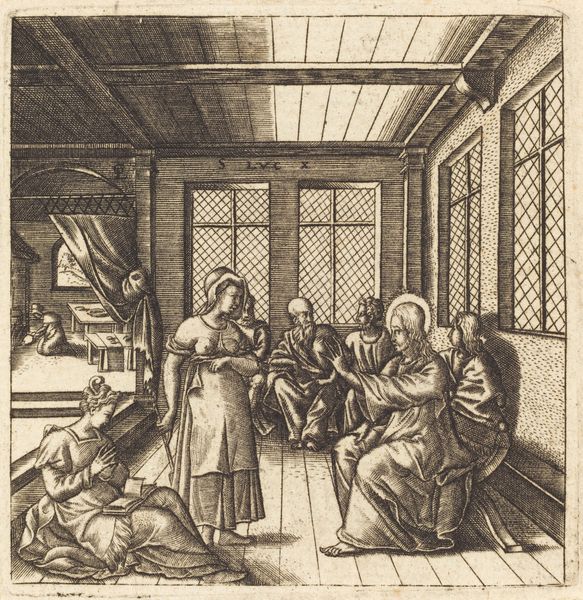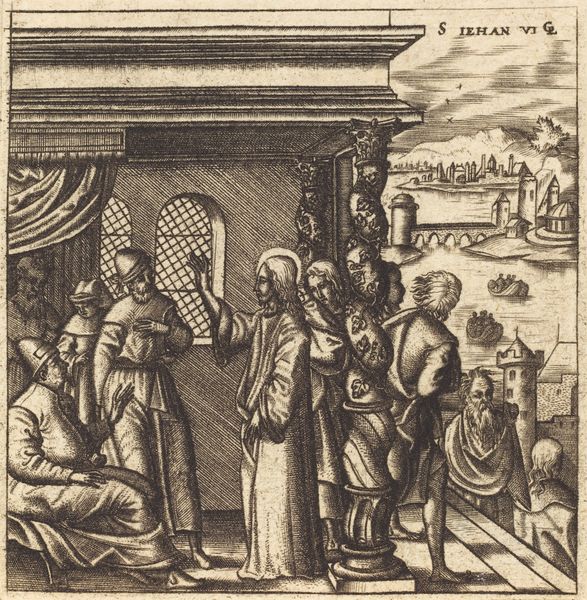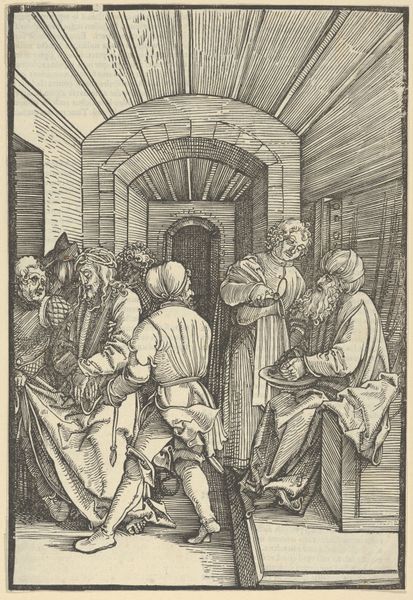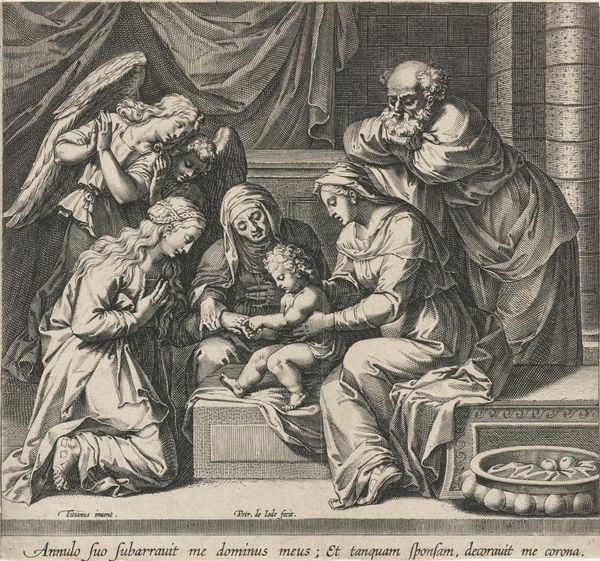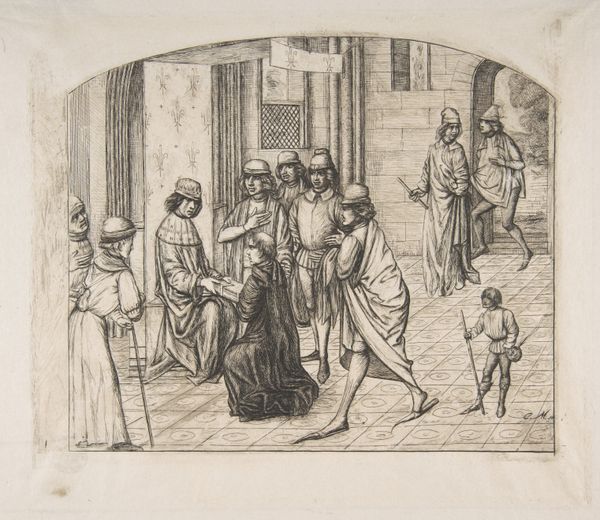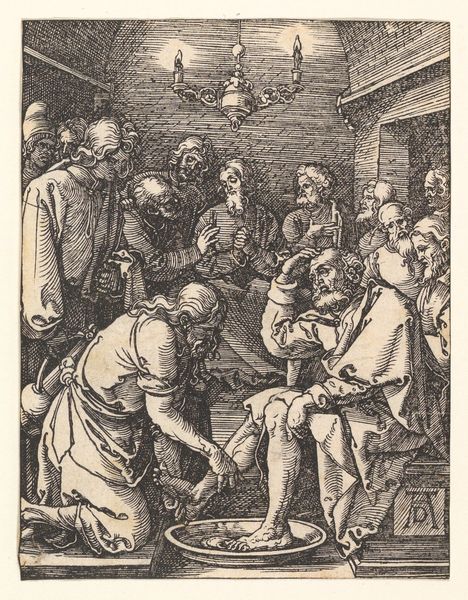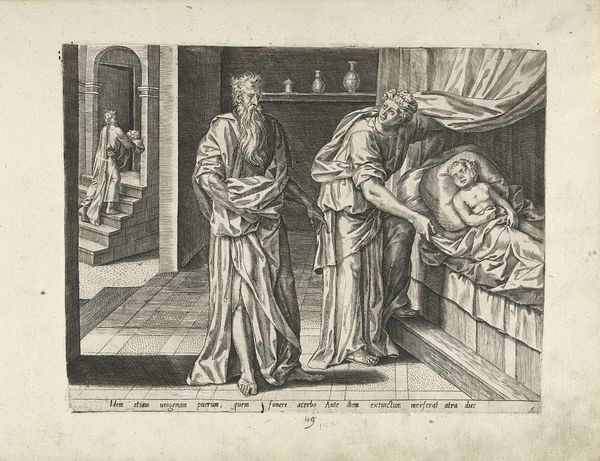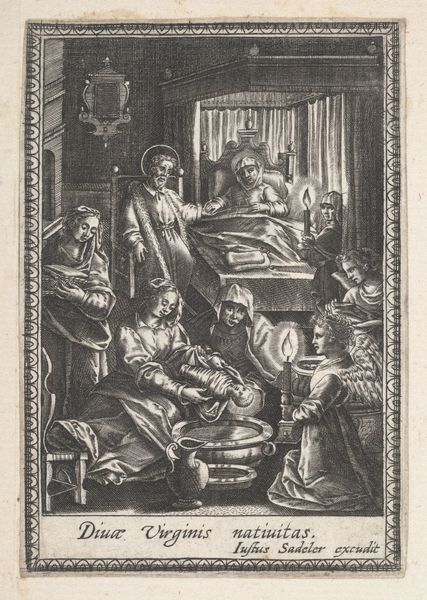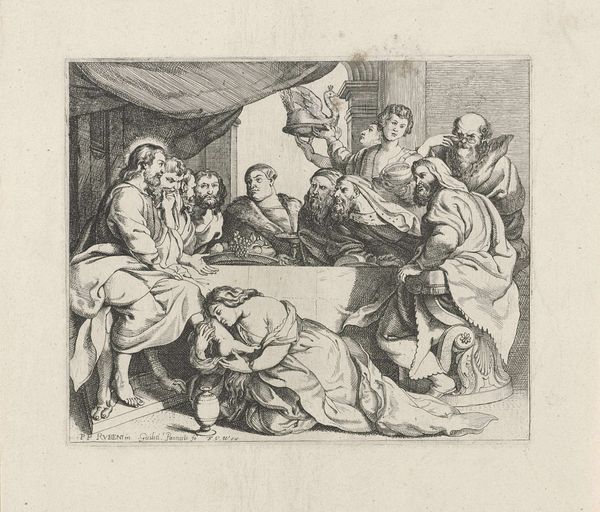
print, engraving
#
narrative-art
# print
#
figuration
#
history-painting
#
italian-renaissance
#
engraving
Copyright: National Gallery of Art: CC0 1.0
Editor: This is Léonard Gaultier's engraving, "Christ Raises the Daughter of Jairus," from around 1576-1580. It’s such an intimate scene, yet the composition feels quite formal, almost staged. What strikes you most when you look at this piece? Curator: The architectural elements create a powerful structure. Note how the lines of the canopy, the window panes, and even the floorboards converge, directing the eye to the central figures: Christ and the daughter. The artist manipulates space to emphasize the focal point. It's also worthwhile observing the expert use of hatching and cross-hatching, employed not merely for tonal variation, but also to define form and texture. The folds in the fabrics, for example, are exquisitely rendered. Editor: That's a fascinating observation. I hadn’t considered how much the architecture contributes to the narrative. What about the group of onlookers? Curator: They frame the action. Observe their positioning; they form a barrier of sorts, guiding our eyes toward the divine intervention. Consider too, the positioning of their hands. Do you notice how gestures direct the viewer’s gaze and amplify the drama? What does that say to you about the engraver's approach? Editor: It reveals an astute attention to composition; every element seems carefully planned to enhance the story. I appreciate your formalist lens – it shows how much the composition can communicate on its own. Curator: Indeed. Focusing on these intrinsic elements reveals how an artist builds meaning through form, regardless of subject matter. The composition _is_ the story, in many respects.
Comments
No comments
Be the first to comment and join the conversation on the ultimate creative platform.
